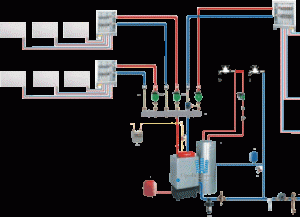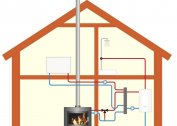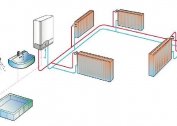Autonomous heating for the cottage is fundamentally different from centralized heating systems.
Schemes of autonomous home heating
Autonomous heating of a country house is a complete closed system, which includes:
- A node that produces heat;
- Coolant delivery circuits;
- Modules that transfer heat;
- In some cases, water filters;
- Expansion tanks;
- Relays and microcircuits that control the operation of nodes.
Fuel consumption for autonomous gas heating of a private house depends on the characteristics of the system: the efficiency of the heat generating unit, the design of the heat exchangers, and the type of fuel. Significant influence is also exerted by such parameters as:
- Insulation of walls, roofs and floors;
- Setting the required temperature level in different rooms;
- The presence of ventilation systems that return part of the heat back to the house;
- The location of the windows depending on the cardinal points and the wind rose.
You can talk about the effective operation of the autonomous heating system of a country house if the temperature in the rooms is comfortable for residents. You need to calculate the heat loss for each particular cottage. This takes into account the type of pipes used for heating, the features of the boiler and exhaust ventilation, as well as weather conditions and lifestyle of the owners of the house.
Conditional autonomous heating of a cottage
An autonomous heating system at home, powered by gas or electricity, is considered conditionally autonomous by specialists. Heating is carried out using boilers that heat the coolant - water. The most modern boilers are equipped with automatic control systems and their efficiency is higher than 65 percent, condensing boilers up to 98 percent.
Such an autonomous heating system for a cottage does not require the construction of a separate room, a warehouse for storing fuel. It can be combined with heat guns, solar and photovoltaic batteries.
Disadvantages of autonomous heating systems
Cons of autonomous gas heating of a private house:
- The temperature in the house depends on the constancy of the supply of fuel, its quality. If there is insufficient pressure in the system or gas is of poor quality, the efficiency of the equipment will decrease. Danger to boilers and voltage drops in the network. Stopping devices in severe frosts can lead to ruptures of heating mains and radiators;
- Connecting an autonomous home heating system to the gas system (including all the necessary documents) is very expensive, and the fuel itself is becoming more expensive. Therefore, for a full payback of the equipment, at least 7 years are necessary.



